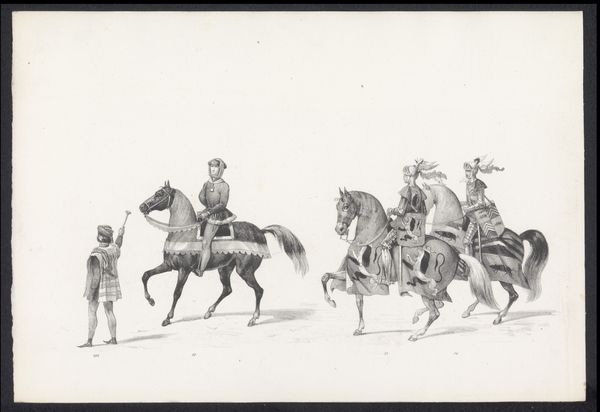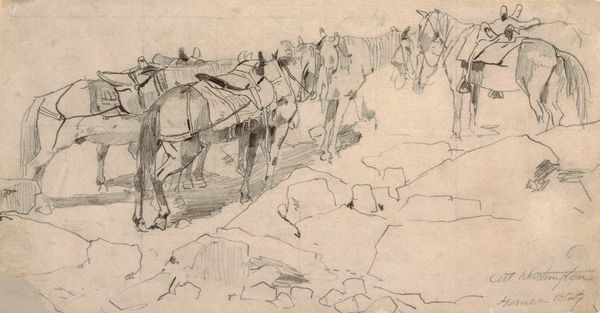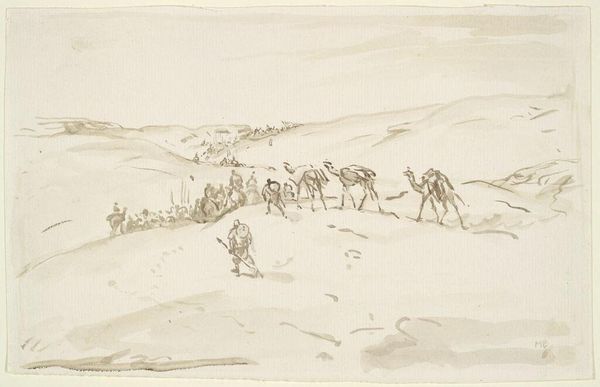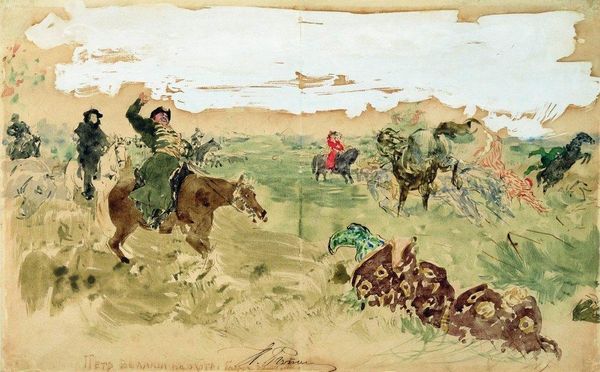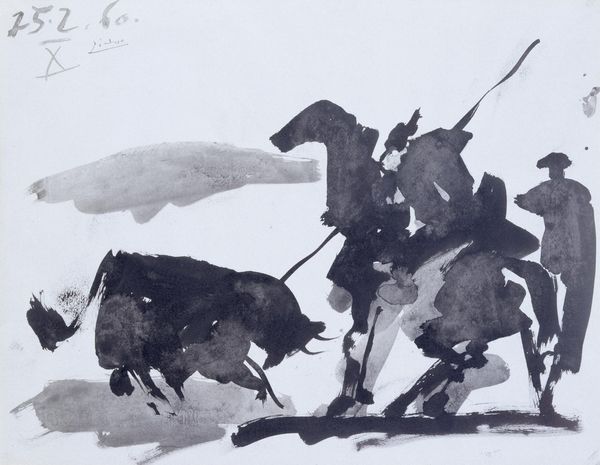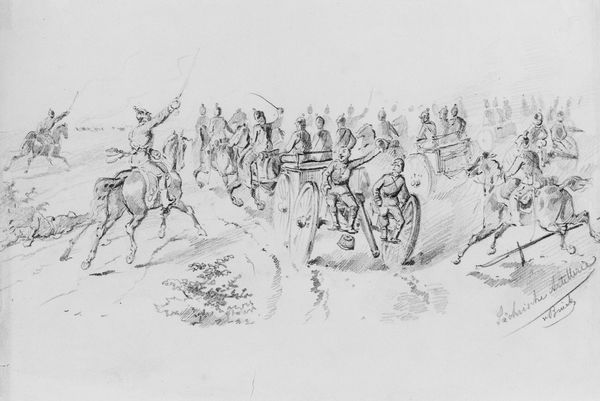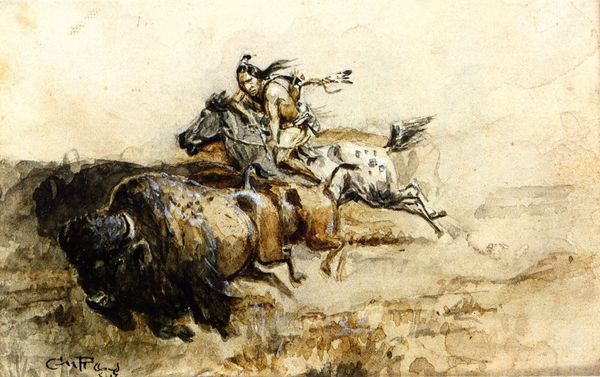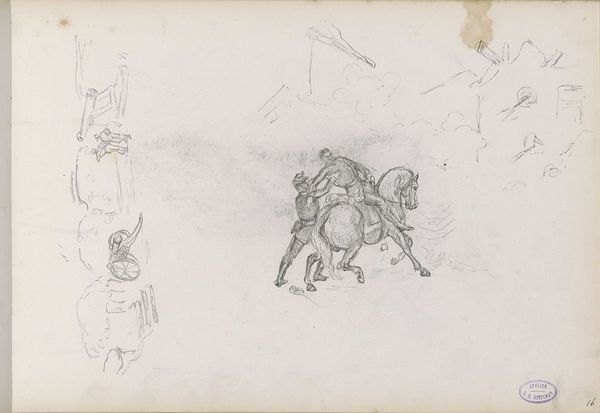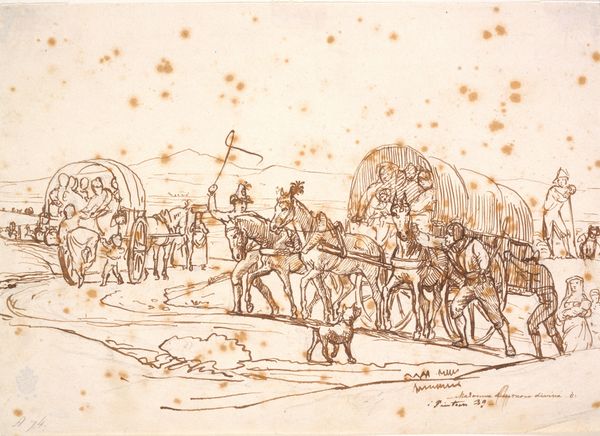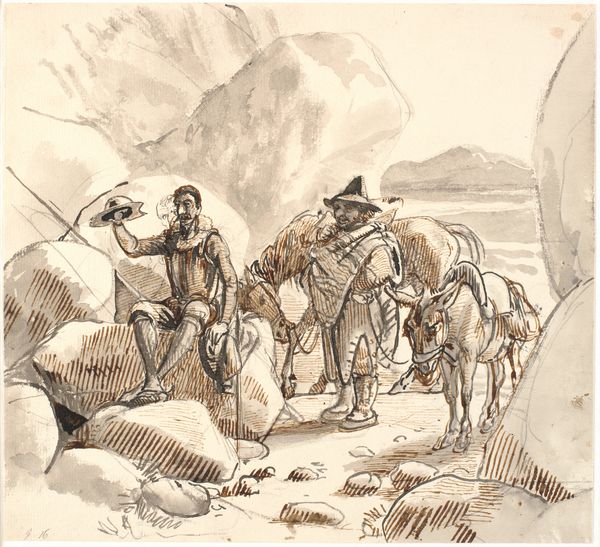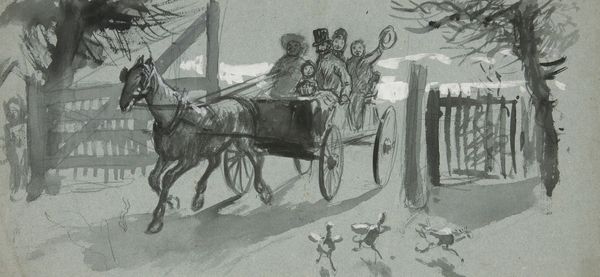
Copyright: Public domain
Curator: What a fascinating piece. We’re looking at Andrei Ryabushkin's "Governor's Wife Martha and eternal bell," a drawing rendered in pencil, graphite, and ink dating back to 1886. Editor: My initial impression is of a silent procession through a stark, winter landscape. It’s monochrome, almost ghostly, making me think about transience and the fragility of life itself. Curator: It is interesting to look closely at the economic context. This work highlights the social divide. Ryabushkin presents the arduous journey for the governor's wife in this vast expanse with many figures who were using horses to deliver products and other services. This serves as a sharp contrast to the lower class that walk alongside them. Editor: Yes, the weight of materials and labor feels palpable even in the delicate strokes. But look closer – there’s a definite romantic undertone to it as well. Notice the dynamism of the horses, and how the landscape almost fades in the distance. It evokes a feeling of a journey not just through physical space, but perhaps through time or memory. What is the relationship, then, of temporality with work as progress? Is progress a sort of burden and displacement? Curator: Indeed. One thing I appreciate is the open texture with use of graphite, the work becomes more realistic with each addition. But look at how that influences our understanding of artistic boundaries and definitions between traditional and modern forms. There's a unique blend of the formal with raw, process-driven materiality. It gives this genre painting a refreshing quality. Editor: Precisely. It pushes us to contemplate not just what we see, but how it was made and the world that it comes from. The mood here becomes something almost holy – reflecting the burden of human history, a feeling both grand and infinitely sad. Curator: Absolutely, exploring this picture is like going back in time while challenging existing beliefs! I am taken not only by the artist’s vision, but also its subtle reflection on Russian history. Editor: Well, looking closer helps one hear the silence – an eloquent articulation through these figures’ relentless pursuit that remains incredibly captivating today.
Comments
No comments
Be the first to comment and join the conversation on the ultimate creative platform.
